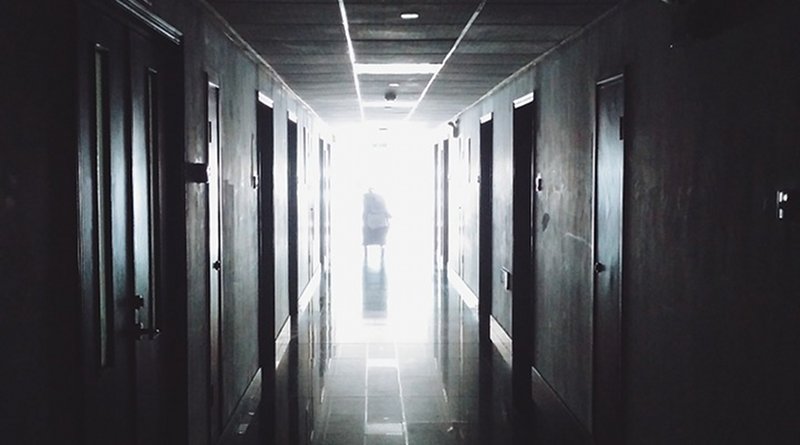Dying At Home, Lack Of Healthcare Contribute To COVID’s Hidden Death Toll
Inaccurate COVID death counts were more likely in counties with a greater share of uninsured residents, less access to primary care, and more at-home deaths, obscuring the true impact of the pandemic on socioeconomic and racial/ethnic disparities.
The official US death count for COVID-19 has now surpassed 650,000, but the true death toll is likely much higher. Recent research indicates that approximately 20 percent of excess deaths—i.e. the number of all-cause deaths beyond what would have been expected in a normal year—were not reflected in COVID-19 death totals in 2020. These excess deaths include mortality that was directly caused by COVID-19 or indirectly caused by social or economic consequences of the pandemic.
Now, a new study from Boston University School of Public Health (BUSPH) and the University of Pennsylvania (Penn) has identified healthcare factors associated with excess deaths that have not been assigned to COVID-19 at the county level across the US.
Published in the journal JAMA Network Open, the study found that a greater proportion of excess deaths not reflected in COVID-19 death counts occurred in counties with reduced access to health insurance and primary care services, as well as in counties with more deaths that occurred at home.
“Accurate and timely mortality surveillance is critical to a well-functioning and equitable public health system,” says Andrew Stokes, lead author and professor of global health at BUSPH. “In the context of COVID, inaccuracies in cause of death ascertainment have hidden the true scale of the pandemic and its vastly uneven impact across communities. In the present study, we find that discrepancies between official COVID death tallies and excess mortality estimates were especially severe in areas with poor health care access and more at-home deaths.
“These differences suggest an urgent need to increase funding and support for the U.S. medicolegal death investigation system, which is often involved in certifying home deaths,” Stokes says.
The study builds upon earlier findings by the researchers, who found that excess deaths not directly attributed to COVID-19 were higher in counties with lower socioeconomic status and less formal education, as well as in counties located in the South and West, and counties with more non-Hispanic Black residents. In the JAMA Network Open study, Stokes and colleagues used publicly available data from the National Center for Health Statistics, the Centers for Disease Control and Prevention, and the US Census Bureau to compare the percentage of excess deaths not attributed to COVID in 2,096 counties in 2020 with county-level information on residents’ access to healthcare and locations in which excess deaths occurred.
In counties with more uninsured residents, the percentage of excess deaths not attributed to COVID-19 was higher than in counties with fewer uninsured residents. Similarly, the percentage was also higher in counties with fewer primary care physicians per capita.
“Patients without health insurance or access to a doctor may be less likely to receive COVID-19 testing and have their death accurately coded to COVID-19,” says study co-author Dielle Lundberg, research fellow in the Department of Global Health at BUSPH. “Expanding access to healthcare is thus a priority not only for health equity, but for data integrity.”
The researchers also found that in counties with a greater number of at-home deaths, the percentage of excess deaths not assigned to COVID was significantly higher than in counties with fewer at-home deaths, and with more deaths at hospitals and in nursing homes. It was also higher in counties that lacked a medical examiner (18 percent).
“At-home deaths are more common in rural areas where there is less access to hospital care, and where people are more likely to have died without being tested for COVID-19,” says Jacob Bor, assistant professor of global health and epidemiology at BUSPH. “Additionally, ’cause of death’ for people who die at home may be determined by coroners who were not present prior to the death, and who lack the formal medical training of medical examiners. Failure to attribute deaths to COVID-19 in rural areas led to biased estimates of epidemic severity and might have reduced compliance with preventive strategies and less demand for protective public health policy.”
The researchers say the underreporting of Covid-19 deaths obscures the true impact of the pandemic and disproportionately impacts communities of color and other populations that are already vulnerable to social and racial injustices.
“Given that underreporting is closely tied to access to health insurance and healthcare providers, this underreporting is likely to have a greater impact on minority populations,” says study co-author Irma T. Elo, professor and chair of sociology at Penn. “When Covid-19 does not appear on the death certificate, these populations are less likely to be able to access government support, such as funeral assistance from FEMA, and this is one of many examples of how COVID-19 has exacerbated existing racial and ethnic inequalities.”

